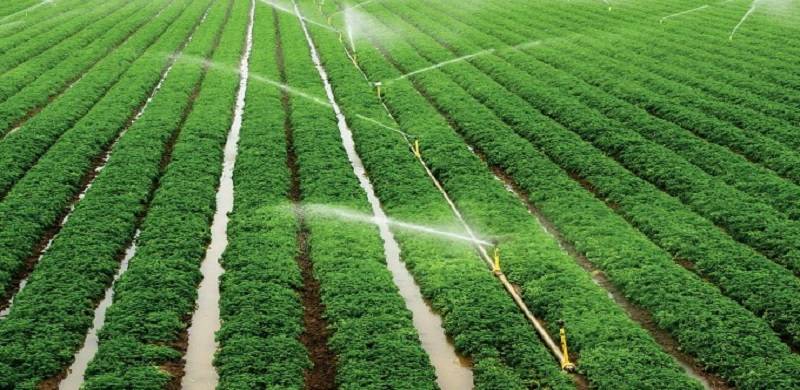
By Sumeera Ashgar Roy and Shahzad Asghar Roy
Human beings have spent centuries without electricity and gasoline/petrol. They can potentially live the rest of their lives without them. But one cannot envisage existence without water. And though water makes up three-fourths of Earth, it is a finite resource - especially given how ruthlessly we use it. In the coming years, most of the wars may break out due to trans-boundary waters – much as there is a huge risk of a skirmish between Pakistan and India. It may not only bring forth inter-state confrontations but inter-provincial contests within countries too.
Most of the Earth's water is saline, which accounts for 97%, whereas only 3% of water is fresh, which also is not easily accessible. Two-thirds of the world's populace lives under severe water stress conditions, whereas half of the world's largest cities are going to face a huge water shortage in years to come. As water is the main component of the agriculture sector, so wise and efficient use of it in that sector can stave off the risk of water scarcity.
On average, Pakistan gets 145 MAF (Million Acre Feet) water in its rivers. Out of this surplus water flow, 12 MAF is used for domestic purposes and 8 MAF is consumed by industries. The worst figure to contemplate is 104 MAF, which is used for irrigation purposes. Without a doubt, Pakistan's canal system is well organized and one of the world's best irrigation systems, which was established in the colonial era. But after the 1947 Partition, it has been ignored, owing to a lack of experts who could have helped maintain and transform these vital bloodlines. If developments had been made to this irrigation system, it could have saved at least 80 MAF water for our country, and merely 20 MAF would have been sufficient for irrigation purposes. Or, as hydro-geologist Dr. Hassan Abbas puts it, we are pouring a full bucket where a glass would have been enough. We have not bid farewell to outdated and obsolete irrigation methods. And on account of that, water gets wasted in the form of seepage and evaporation.
According to a World Economic Forum report, the biggest threat which Pakistan is going to face is the water crisis. The International Monetary Fund (IMF) has ranked Pakistan 3rd among countries facing acute water shortage. Some other institutions like UNDP (United Nation Development Programme) and the Pakistan Council of Research in Water Resources (PCRWR) also have warned Pakistan about the gravity of the crisis. They have rung the alarm bell that Pakistan may face a water shortage of high intensity in 2025 if it does not take measures to overcome this problem.
The PCRWR reported that Pakistan had already touched the water stress line in 1990 and the water scarcity line in 2005, and it may face a shortage of 30 MAF in the coming years. Furthermore, studies by some experts have revealed that Pakistan will be the most water-stressed country in the region in the year 2040. Our country's economy is agriculture-oriented.
Pakistan's population growth is jumping up uncontrollably, and owing to that, it has been ranked as the 4th most intensive water-using country. At the time of independence, its population was 30 million, which has now gone up to 200 million. But none of the leadership took the initiative to overcome this problem except Ayub Khan. That, too, was not enough: to construct dams is not the sole solution to this problem. Instead, dams became a part of the problem. Their maintenance, initial investment requirements and effect on nature is serious trouble, especially for countries such as ours.
What can be a possible alternative to dams? The answer is DEs, i.e., dam equivalents. A dam takes at least ten years in its completion, whereas the dam equivalent takes a minimum of 3 years. Furthermore, dam equivalents can be used for the sake of trade and commerce purposes, and billions of dollars can be added to the national exchequer. Running water has proved more economical than standing water. DEs will also assist the country in avoiding regional bickering within Pakistan. The construction of dams has proved controversial in the history of Pakistan. Making our irrigation system efficient and conserving the rest of the water in DEs may help the country to counter the menace of water scarcity, as much of Pakistan is reliant on groundwater.
Israel has been the most efficient country so far in water conservation by applying different approaches like drip irrigation, desalination and recycling of wastewater. Currently, it is assisting almost 150 countries in overcoming water scarcity.
Pakistan also must make drip irrigation common. It must assist its farmers in conserving water. The underground water storage capacity of Pakistan is 3,000 MAF. But not even a single initiative has been taken yet to exploit this natural reservoir. As for as I know, there is not also a single hydro-geologist expert who could serve WASA or WAPDA with their valuable suggestions.
Pakistan's foreign policy towards India is water-oriented. India has often used water diplomacy against Pakistan, much as after the Uri attack, Narendra Modi threatened Pakistan by saying that “water and blood can't flow together.” Once Pakistan overcomes the water scarcity problem, it can more realistically move towards reducing its defense budget, and so it will be in a position to invest in education, agriculture, and health sector. Otherwise, it may have to purchase water from neighbouring countries like India and Afghanistan.
The government has already paralyzed the agriculture sector in the current budget 2020-21. It is hoped that more damage due to a lack of vision can be prevented.
